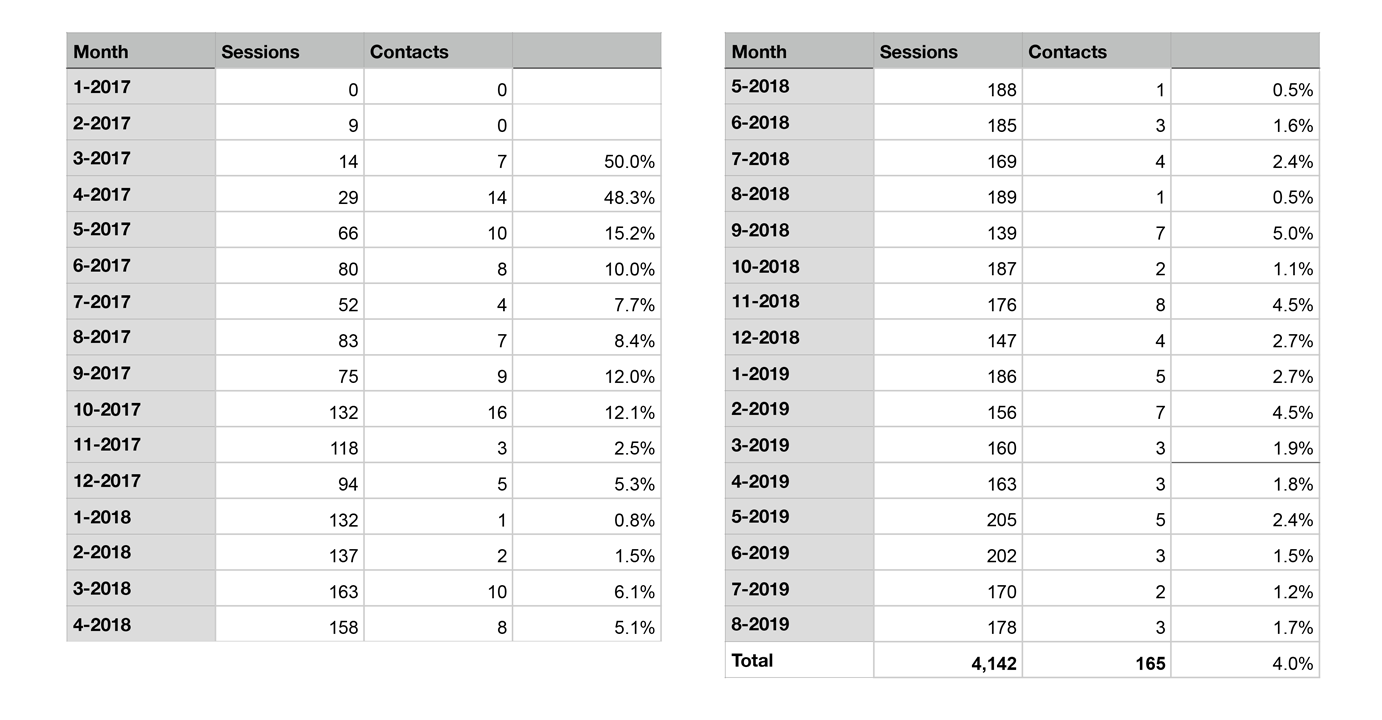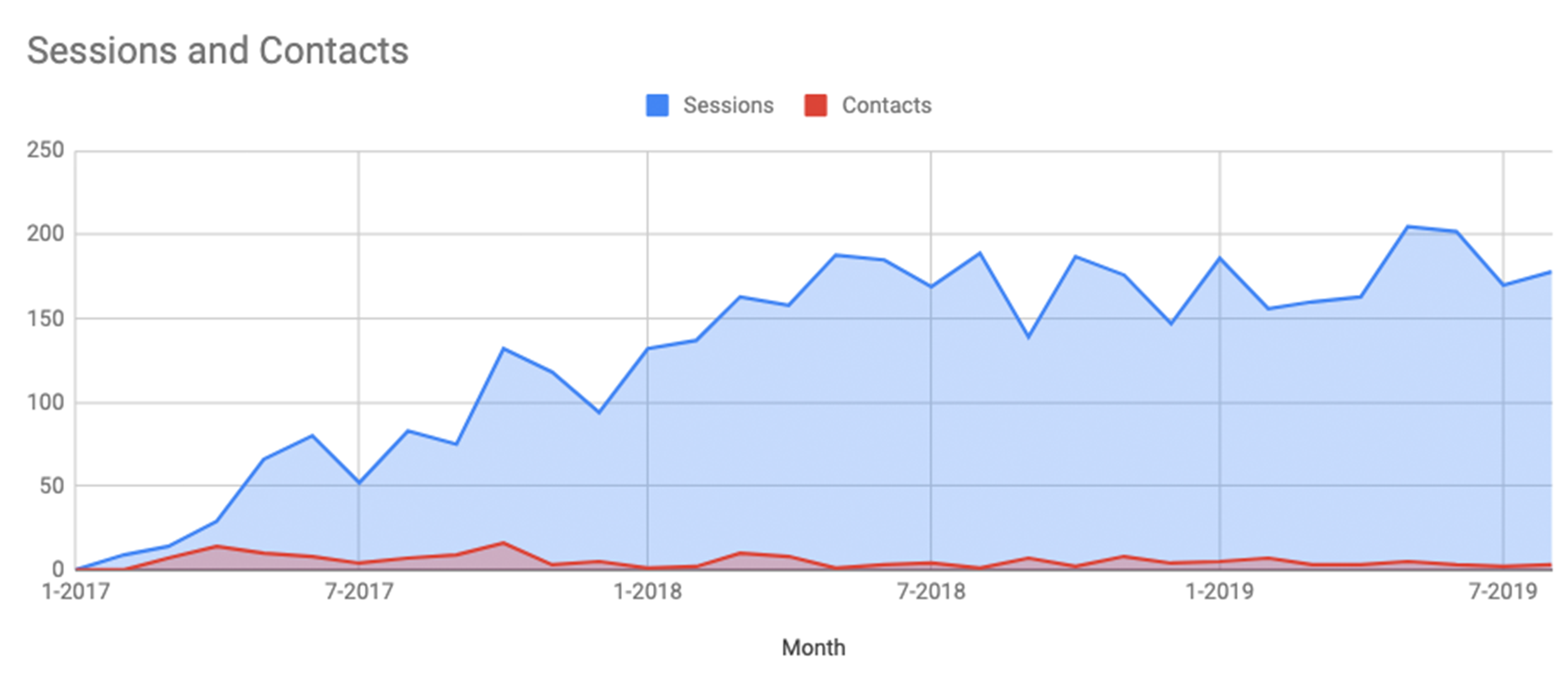Paulo provides advanced thermal processes that enhance the performance of metal components for customers across North America. Five U.S. divisions and a sixth in Mexico serve major automotive, aerospace, agriculture, power generation and oil & gas suppliers as well as smaller local machine shops.
The problem: The lack of a sustained inbound marketing program restricted Paulo’s ability to generate leads online, a venue they knew was critical to maintaining a healthy sales pipeline.
The solution: Gorilla 76 developed a content strategy focused on alleviating confusion as well as showcasing emerging processes and process alternatives.
The result: One of the articles we wrote became the #1 Google search result for its target keyword within a year of publication. Still ranking #1 today, it’s responsible for over 4,100 sessions and has harnessed 165 new contacts in its lifetime.
Inbound marketing is mature enough by now that any client-side marketing manager with a pulse knows it works.
They also know it takes time. It could be a few months before it moves the dial. Deciding whether to move fast or play the long game is a barrier to action we’ve seen time and time again.
But inbound success is worth waiting for. This case study highlights:
- The initial development of a marketing strategy targeted to Paulo’s buyers and their challenges
- Execution of highly technical content pieces in service of that strategy
- The resulting traffic and lead generation that has persisted for years
The problem
Founded in 1943 in a rented St. Louis storefront, Paulo made a name for itself by investing in the most advanced thermal processing equipment. Their engineers and metallurgists liked to mod furnaces in-house if “most advanced” wasn’t advanced enough for them.
(Company lore has it that frustrated engineers once sliced a continuous belt furnace in half long-ways and then welded in the furnace equivalent of a dining table leaf to make it tall enough to process artillery shell casings.)
Today, Paulo’s metallurgy staff is arguably the envy of the industry; its quality systems brought thermal processing into the digital age. They’re serious pros by necessity: If their processes aren’t executed perfectly, seatbelt buckles might crack in half in car wrecks, wings might fall off planes mid-flight and rocket boosters might malfunction during liftoff.
But in early 2017, it was apparent to Paulo that a lack of buyer-focused thought leadership online was a missed opportunity. If they did not reach the growing share of their audience searching for solutions online, someone else would.
The solution
Getting answers to unanswered questions is a prerequisite for developing rational strategy. In this case, it was critical that we understand Paulo’s buyers more intimately. So we started asking questions.
Who were these people? Who do they work for? What do they know? What don’t they know? What problems do they have? Which of those problems can Paulo help solve?
Material and design engineers in the aerospace, automotive and other industrial sectors knew thermal processing was vital to the performance of parts they create. Some understand metallurgy well despite its complexity, but they don’t always know how advancements in the science can apply to their work. Thermal processors are successful when they demonstrate to these key personas that they can repeatedly execute specified treatments perfectly.
With that in mind, we elected to develop a library of content to help buyers make more sense of complicated topics.
Metallurgy suffers no shortage of complex topics, so we then asked Paulo: In an ocean of obscure technical principles, which would you start with? Which is your audience most interested in right now?
The answer: nitriding. And more specifically, the differences between carbonitriding and nitrocarburizing.
Here’s a primer if you’re curious: Carbonitriding and nitrocarburizing each are “case hardening” processes in which carbon and nitrogen are dissolved into the surface of a steel part. Adding these elements to the surface of the part makes it harder and more wear-resistant on the outside while preserving ductility throughout the rest of the part.
Consider gears: Their teeth need to be very hard or else they wouldn’t keep their shape. But they must also remain softer and more ductile on the inside so that they don’t snap under the constant stress of their service.
Choosing this topic shows how the planning process should work. The questions we asked helped us to identify the topics we needed to address. Those topics led us to the keywords we needed to target.
The order matters. Inbound marketing isn’t about targeting the best keywords. It’s about targeting the right ones.
After several hours of additional research and an interview with Paulo’s head metallurgist, we wrote Case hardening basics: Nitrocarburizing vs. Carbonitriding. It was published in February 2017.
(By the way—if you’re having a hard time generating ideas to turn into content on your website, you need to read this.)
The result
The immediate results were predictable.
As the chart below shows, the article earned only nine sessions and generated no leads in the first two weeks it was live.
Over the following several months, performance slowly improved. Paulo collected a handful of leads each month. But then the flood gates opened.
Sessions skyrocketed in October 2017. Contacts bumped up significantly, too. What had happened?
This is textbook inbound. Traffic and leads crept up slowly at first as search engines tried to determine the content’s value. It became clear as 2017 ended that this article was accomplishing its goal.
It’s hard to pin down exactly how long the article has ranked first on Google for the search term “nitrocarburizing vs carbonitriding.” The best we can tell, it earned the spot in January 2018.
It’s still there. And each of the 165 contacts it’s generated in its lifetime is a compelling argument for why firms in highly technical fields should implement inbound marketing.
Why stop there?
We weren’t finished.
In addition to the data showing the article clearly addressed a knowledge gap among Paulo’s target audience, continued discussion with Paulo revealed that buyers in the industry remained curious about nitriding in general.
So we wrote more. You can see how we expanded on this subject over time:
- Why nitriding is growing in popularity
- Variants in the nitriding process: Do trade names affect outcomes?
- The salt bath nitriding process and its safer alternative
- Understanding effective vs. total case depth
- Low-pressure carburizing for high-hardness and low-distortion parts
Our data show this bank of subsequent articles so far has been responsible for another 150 new contacts for Paulo.
In all, that’s 300-plus new contacts over two and a half years from six blog posts. It’s mighty impressive for a firm that consults with massive OEMs and upper-tier suppliers whose buying decisions sometimes are measured in decades.
Expertise in patient planning
Maybe you’re a believer in inbound in general. And maybe you’re convinced it can address the specific challenges your industrial B2B business faces.
But if you aren’t equipped to create and implement a plan, or if the higher-ups need more convincing before they funnel resources to the effort, read and share our seven core elements of industrial marketing strategy. After reading, you’ll be equipped to find your business’s place in the world and then make the most of the opportunities that await it there.
And if you need a hand plotting the right course for your business, a consultation with us will help.




